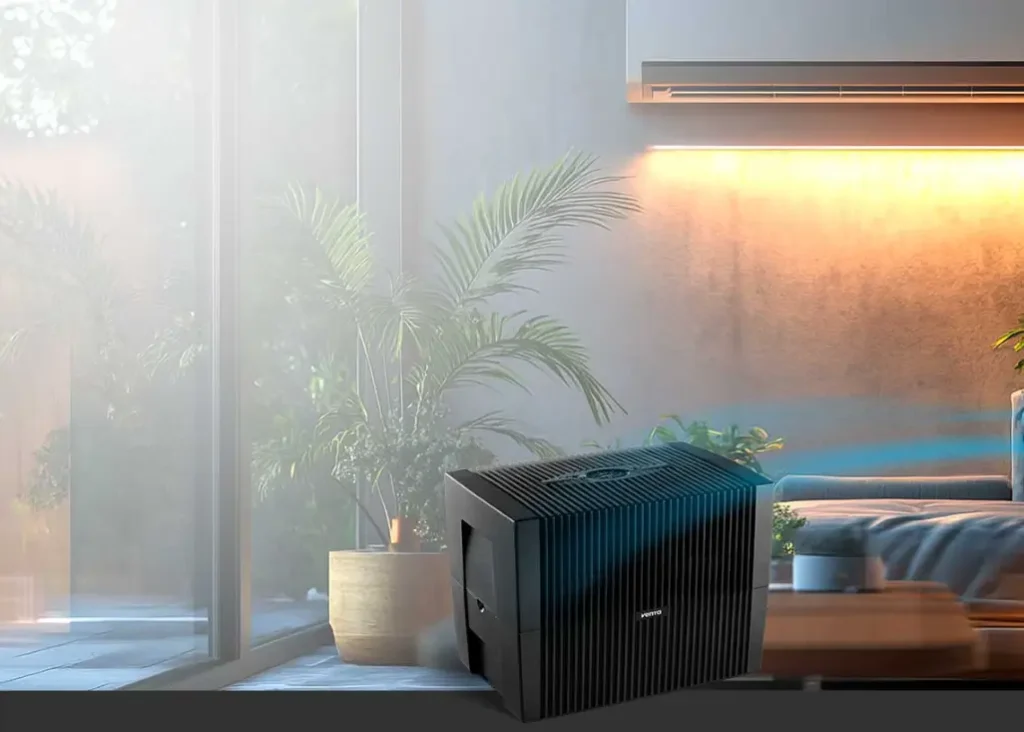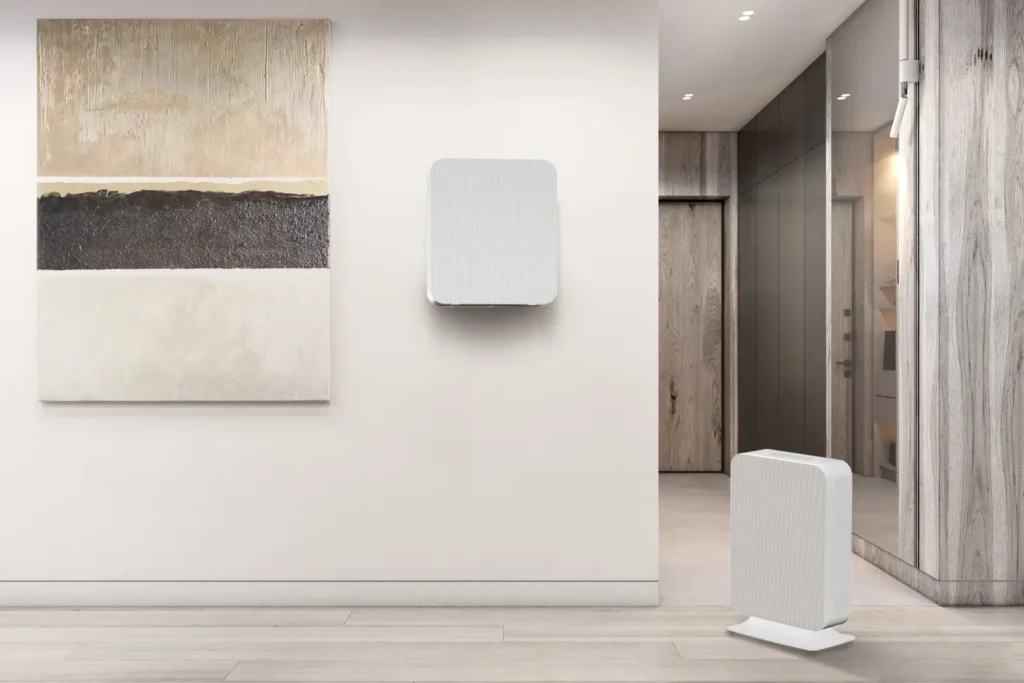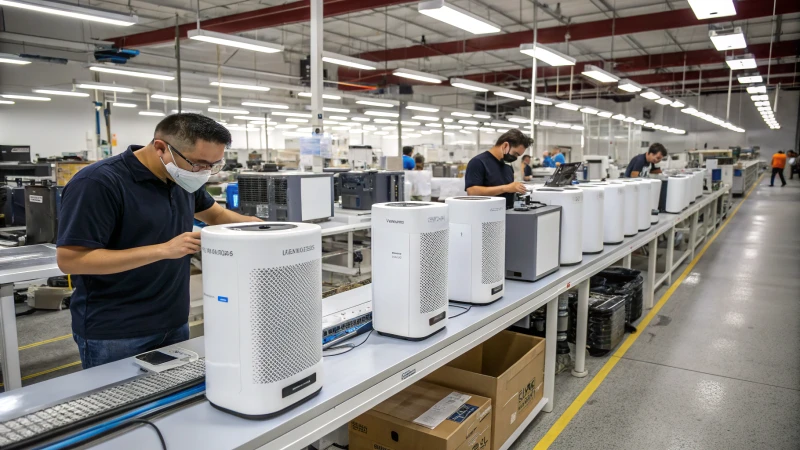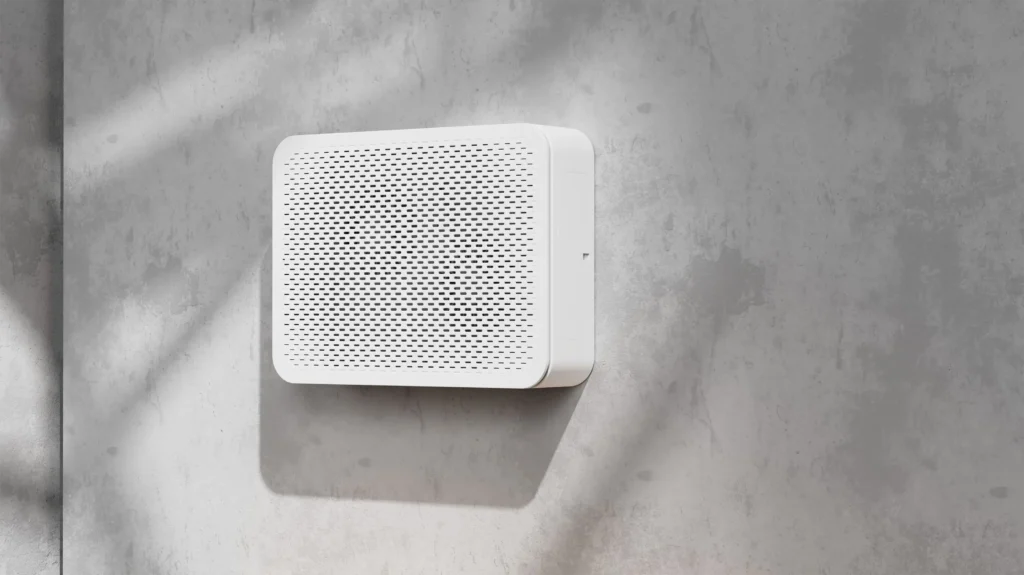Seasonal allergies can be frustrating and potentially dangerous. While they don't have a cure, there are effective means of preventing and treating them. We have listed these remedies below.
There are certain parts of the year when people tend to suffer from allergic reactions. Seasonal allergies tend to happen if your body is sensitive to certain pollens from plants, trees, and grasses. Depending on your level of susceptibility, you may suffer from allergic reactions for one or two months yearly.
The symptoms of seasonal allergies are coughing, sneezing, runny nose, and itchy eyes. These symptoms may last for several hours to a couple of days. In some harrowing cases, they can get severe.
Removing these seasonal allergies and preventing them from happening should be a priority in your home. There are effective methods and strategies you can use here, including the use of high-quality, medical-grade air purifiers.
Where Do Seasonal Allergies Come From?
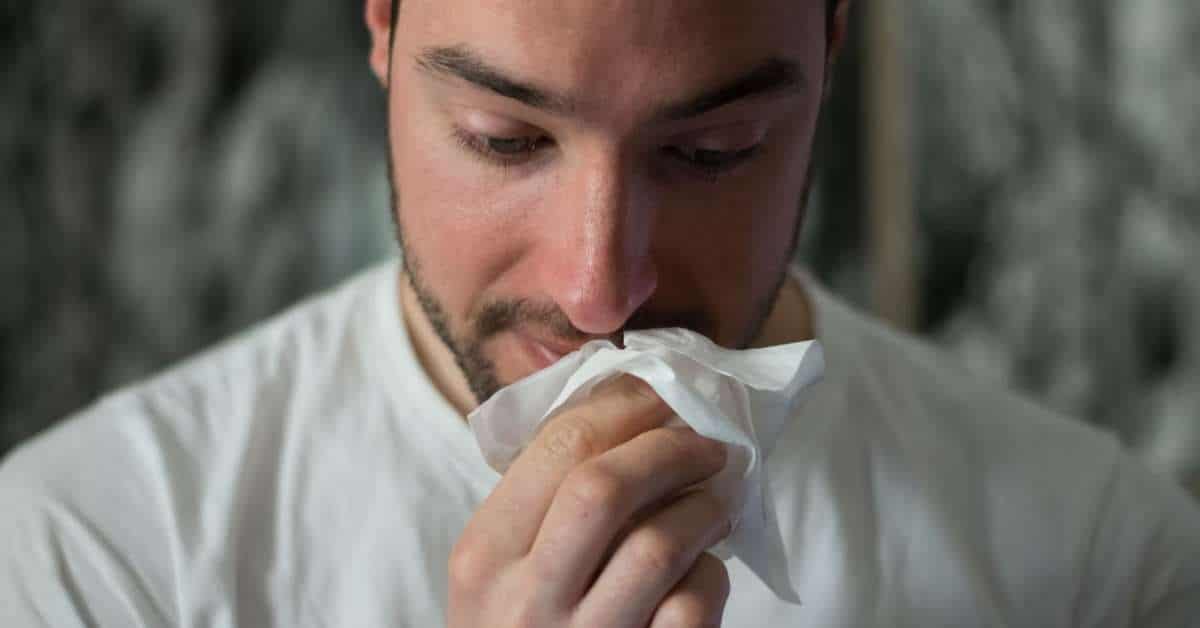
Image Source: Unsplash
Generally, allergies happen when something enters your body, and your immune system tells you that it is dangerous. As a response, your body releases chemicals such as histamines in your bloodstream. They are the ones that cause the symptoms of allergies.
There are numerous causes of seasonal allergies. During spring, trees are the common causes. Hay fever often happens when people inhale pollen from chestnut, poplar, willow, and alder.
Summer isn't a safe period, either. Hay-cutting is often the cause of allergies during this period. However, grasses like timothy grass and ryegrass can also trigger hay fever.
When it is fall, you should watch out for ragweed. They tend to proliferate in temperate areas and are quite difficult to control. The pollen they release is notorious for causing severe allergies.
Winter causes these plants and trees to be dormant. But since people tend to stay indoors, they are susceptible to inhaling allergens such as dust mites and mold.
Is It Normal to Have Allergens in the Air?

Image Source: Unsplash
If you are outside your home, then yes, it is normal that allergens are present. It is something that you cannot control, as there are trees, flowers, and grasses there. Other substances that could trigger your allergies are also present, too, such as chemicals and toxic gasses.
But inside your home, these allergens aren't naturally occurring. These allergy-causing substances should not be present indoors, especially in the context of your seasonal allergies.
Are there budding plants or flowers in your home? Are there trees inside? If your answer to these questions is no, then allergens can be considered an anomalous existence. They should be removed; otherwise, you'll suffer from the nuisances of allergic reactions.
Can Seasonal Allergies Be Dangerous?
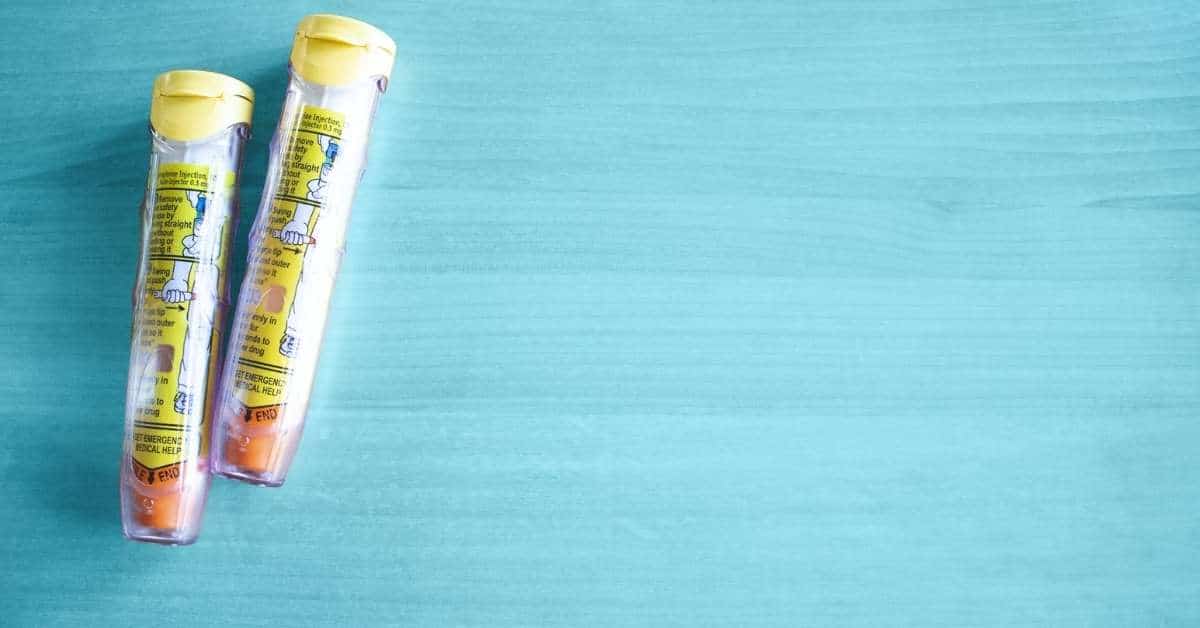
Image Source: Unsplash
Allergies are actually common. Accordingly, over 50 million Americans suffer from different types of allergies every year. Moreover, it is also among the leading causes of chronic ailments in the said country.
Most of the time, allergic reactions tend to generate the following symptoms: sneezing, rashes, coughing, and runny nose. These symptoms also constitute a condition called hay fever.
Severe allergic reactions can also take place. They can cause a person to experience difficulties in breathing, low blood pressure, and frequent asthma attacks. It can also lead to death due to anaphylaxis. The latter is often caused by medicines and food. But sometimes, seasonal and unknown allergens can also trigger it.
Hence, allergies should never be overlooked. Immediate treatment and preventive measures are necessary to keep this condition in check.
Common Areas in Your Home Where Allergens Are Present
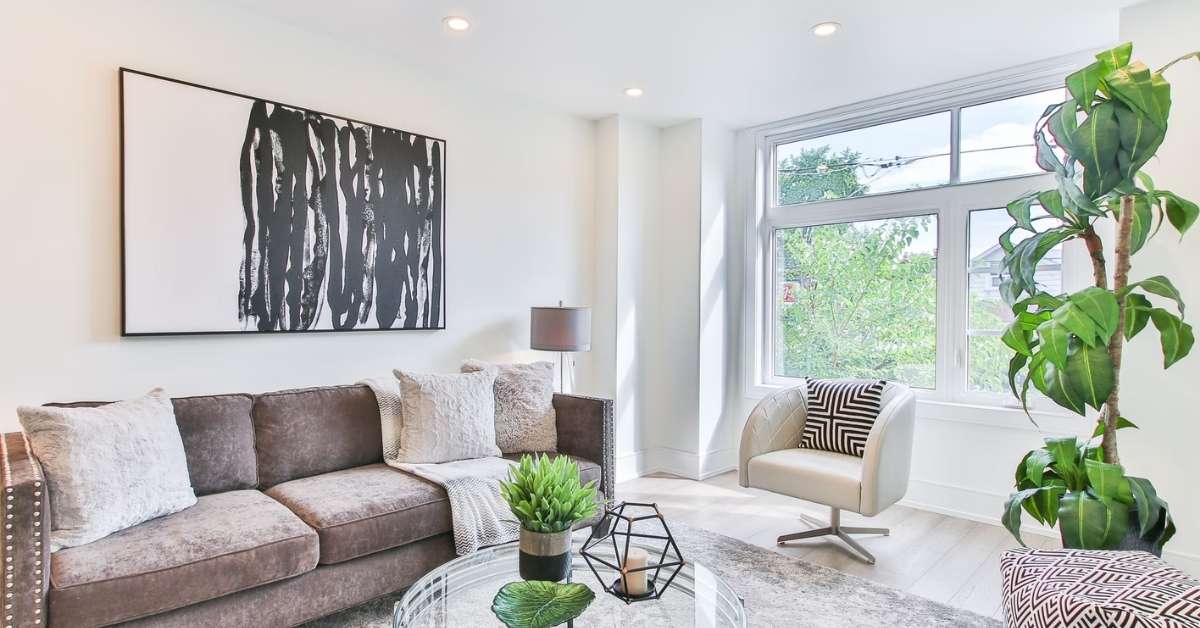
Image Source: Unsplash
When the allergy season arrives, there are certain parts of your home that you need to watch out for. One way or another, these areas are often riddled with allergens.
Living Rooms
Due to the presence of windows and doors in the proximity of your living room, allergens and other pollutants can easily proliferate there. It is essential that an AHAM-certified air purifier is present in this area to ensure that these airborne pollutants won't spread.
Bedrooms
Your bedrooms are not safe from allergens, either. Keep in mind that there are windows and other openings present in these spaces, as well. If you tend to open these windows from time to time, it is very likely that outside pollutants would be able to enter.
Basement
When there are cracks in the floors and walls, seasonal allergens can also thrive. You need to watch out for them, especially in damp areas like your basement. After all, allergens can proliferate in wet environments. Make sure that you do the necessary repairs to your basement, including the plumbing and waterways.
Why is Allergen Purification Important?
For the most part, allergies affect your nasal passages, sinuses, airways, and even your skin. It can deliberately impact your digestive system, causing discomfort throughout its duration.
Keep in mind that allergic reactions tend to range from mild to severe. Severe cases can make a person experience the worst forms of allergy symptoms. Of course, you don't want this to happen to you or your family members.
Removing allergens in your living spaces is important to ensure that you will not suffer from seasonal allergies. You should try purification strategies that would reduce or eliminate the presence of these allergy-causing substances. One way of doing this is through the use of HEPA air purifiers.
Adding Air Purifier to Get Rid of Seasonal Allergies
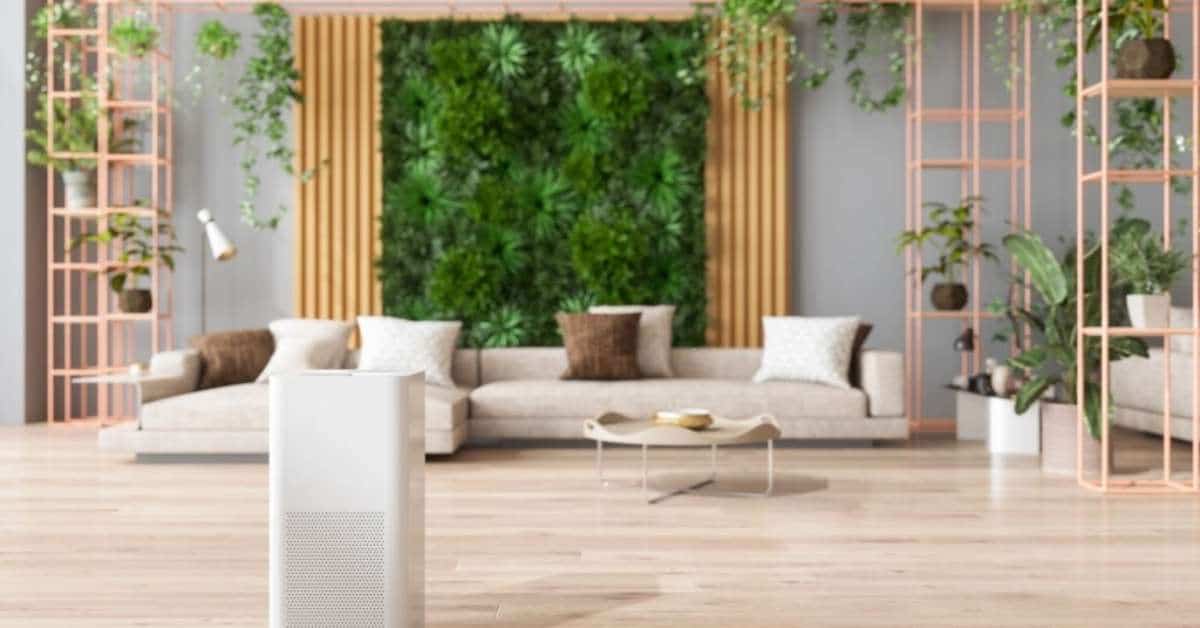
Image Source: iStockphoto
One of the most effective means of removing and preventing seasonal allergies is through the use of air purifiers. These air purifiers are designed to eliminate or remove various airborne pollutants, such as the common causes of allergies.
Read on to learn more about these air purifiers and how they can help you alleviate the symptoms and prevalence of seasonal allergies.
Why is an Air Purifier Important for Improving Air Quality?
Indoor air quality is an issue today. Accordingly, indoor air pollution produces more severe health problems than its outdoor counterparts. After all, the concentration of contaminants in enclosed spaces is pretty high compared to outdoor settings.
It is difficult to deal with airborne particles. Ordinary cleaning methods, such as vacuuming, can't remove them efficiently. Furthermore, they are free-moving, as they are light and invisible. It is quite impossible to tackle them without specialized systems.
Air purifiers are the solution to improving your indoor air quality. These air purifiers employ a simple yet effective filtration system that captures a number of pollutants, such as pet dander, dust mites, dirt, and pollen. These devices are also essential in minimizing the presence of bacteria and viruses.
Read on to learn how these air purifiers work to remove seasonal allergies.
Air Purifiers for Seasonal Allergy Removal
There is an extensive list of possible treatments for seasonal allergies. But if you want a foolproof one, you need to invest in air purifiers. Air purifiers aren't a treatment for these allergies; instead, these devices prevent them from happening.
The key term here is "removal." Once you have these air purifiers inside your living spaces, allergens such as pollen won't be able to circulate freely in the air. Of course, this would result in minimal exposure to these foreign bodies.
Air purifiers can control the presence of airborne pollutants in a given area. The filtration mechanism behind them is simple. However, they are quite effective in removing common causes of seasonal allergies from the air.
Are Air Purifiers for Seasonal Allergy Removal Safe?
Definitely. Filter-based air purifiers are generally safe, as they don't release harmful emissions and residues. The filters have no added compounds of substances that pose a threat to human health.
The only type of air purifier you need to be wary about are ozone air purifiers. These ozone air purifiers produce ozone, a gaseous compound that is said to neutralize specific contaminants.
Ozone filtration is used in water system filtration. However, they aren't that suitable for air purification, as ozone is a form of lung irritant. Exposure to them can lead to health complications. At the same time, the Environmental Protection Agency mentioned the effectiveness of these ozone air purifiers isn't verified yet.
How Do Air Purifiers Work to Remove Causes of Seasonal Allergies?
Seasonal allergies are due to the exposure to elements that are "seasonal" in nature, such as pollen. This means that they are only present in particular periods of the year.
Air purifiers deal with these substances through the use of their HEPA filters. To make things simple, HEPA filters remove microscopic particles. They are rated to capture up to 0.3 microns of pollutants. Hence, they are capable of trapping allergens and certain pathogens.
These HEPA filters are typically constructed from plastic fibers or borosilicate glass. They are placed in a layer of fibers with random placement. But HEPA filters don't work like a sieve that traps large particles and lets small ones pass through. Instead, they trap particles through interception, diffusion, and impaction. In short, these contaminants would end up sticking to the fibers.
Removing Seasonal Allergies by Air Purifier: Step-By-Step
Air purifiers are effective in removing allergens in the air. Here's how these air purifiers do it:
- Air purifiers have fans inside them that draw air inside them. There are inlets into which the air would enter.
- Inside, the air will be pushed through several layers of filters. The standard air purifier has the following filters: pre-filter, HEPA filter, and carbon filter.
- It is on the HEPA filter where most of the allergens are trapped. Ordinary filters can't eliminate allergens because of their extremely small size.
- After passing through all the filters, the air is distributed back to the room.
The process is repeated until such time the presence of allergy-causing contaminants is controlled. As you can see, the procedure is quite simple. But it is effective enough in preventing the surge of seasonal allergies.
How Long Does It Take for Seasonal Allergies to Settle After Removal?
Allergic reactions have varying durations. Even if you have successfully removed the cause of the allergy, this doesn't mean that the symptoms would subside right away.
In some cases, the allergy would disappear after a couple of hours, especially if the sufferer is no longer exposed to the triggers. However, some people have it bad. It would require them to endure the symptoms for a couple of days.
Again, exposure remains to be a big factor here. During allergy seasons, it is likely that the allergic reactions will last longer. Hence, it is necessary that you have an air purifier in your living spaces to prevent prolonged agony.
Things to Consider Before Buying an Air Purifier for Removing Seasonal Allergies
When it comes to dealing with allergens, it is essential that you get the correct air purifier. The following specifications should be present to ensure that your air cleaner can capture and eliminate the causes of seasonal allergies.
- HEPA filters - A HEPA filter is an important aspect of an air purifier. This is the one that captures 99.9 percent of contaminants that are as small as 0.3 microns. In this scale, common allergens--such as pollen--are found. If the air purifier has a HEPA filter, it is guaranteed that it can screen off the majority of allergens in the air.
- Activated carbon filter - Allergies may also be triggered by smell, gaseous substances, and volatile organic compounds. HEPA filters can't deal with these things. What you need here is a carbon filter. The latter works by capturing those aforementioned contaminants into its surface.
- Square footage - You also have to assess the effective range of an air purifier. For instance, if your living space has a size of 500 square feet, you need an air purifier that has a coverage of at least 500 square feet. The larger the coverage, the better.
- Clean Air Delivery Rate - You need to check the air purifier's Clean Air Delivery Rate. In a nutshell, this rating indicates the volume of air that an air purifier can clean in a given period and setting. Again, the higher the CADR number, the better.
Air Purifiers That Are Best for Getting Rid of Seasonal Allergies
Not all air purifiers are created the same. Some have specific qualities that enable them to excel in removing allergens in the air.
The following air purifiers from HisoAir are among the air cleaning systems that you need to check first if you are suffering from seasonal allergies:
| Coverage | Types Of Filters | |
| HisoAir Model HA-1968 | 1937 square feet | HEPA filter, activated carbon filter, pre-filter, UVC light |
| HisoAir Model HA-1601 | 1011 square feet | HEPA filter, activated carbon filter, pre-filter, UVC light |
| HisoAir Model HA-138 | 904 square feet | HEPA filter, activated carbon filter, pre-filter, UVC light |
1. HisoAir Model HA-1968
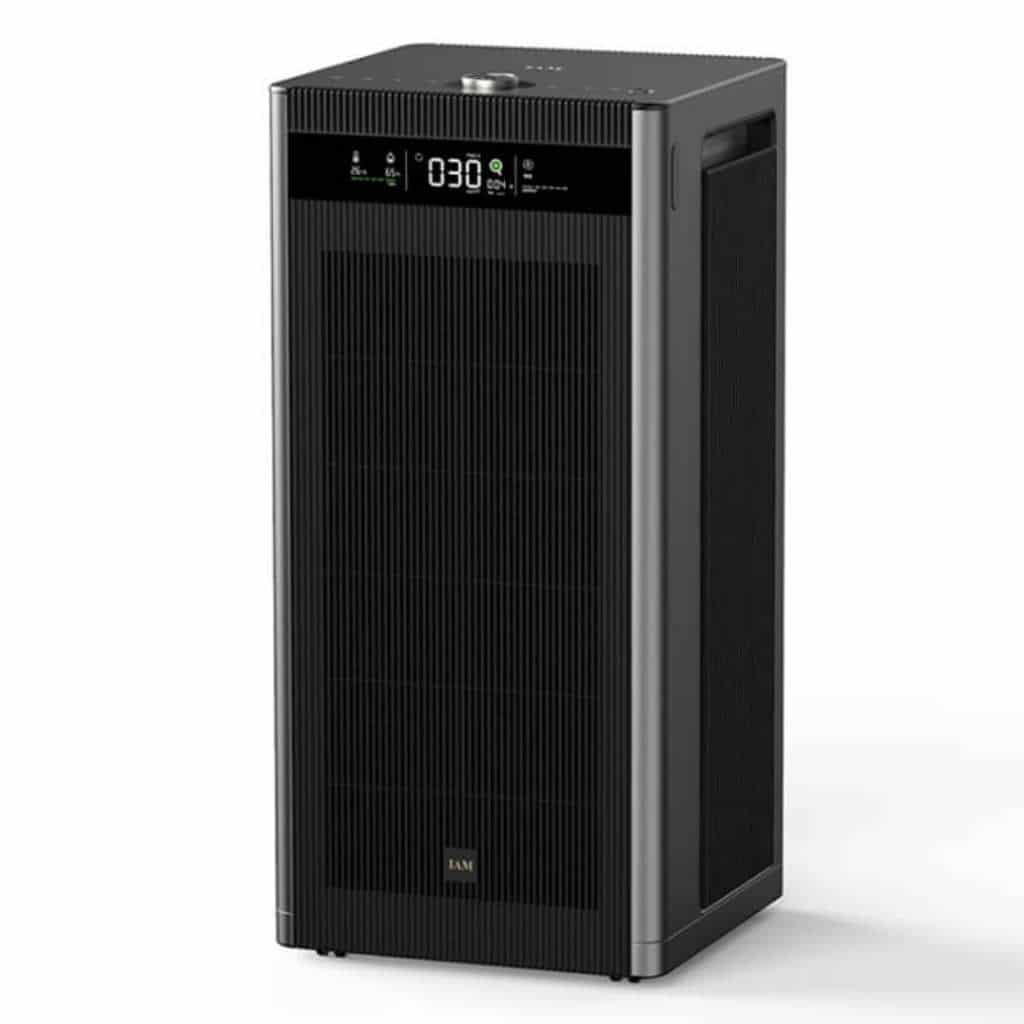
Image Source: HisoAir
Designed for large spaces, the HisoAir Model HA-1968 is an effective air cleaner for homes, buildings, and schools. This air purifier has an effective coverage of 1937 square feet. At the same time, its high Clean Air Delivery Rate (1500 m3/h) is indicative that it can process and clean air in large volumes. If you need a whole-house air purification, this device could be the perfect option.
The HisoAir Model HA-1968 has the necessary filters that eliminate several pollutants in the air, such as allergens. Its HEPA filter has a medical-grade construction. It removes 99.9 percent of microscopic contaminants, such as pollen, molds, and spores. With this air purifier, the harsh effects of spring on your body are minimized!
| PROS | CONS |
|
|
2. HisoAir Model HA-1601
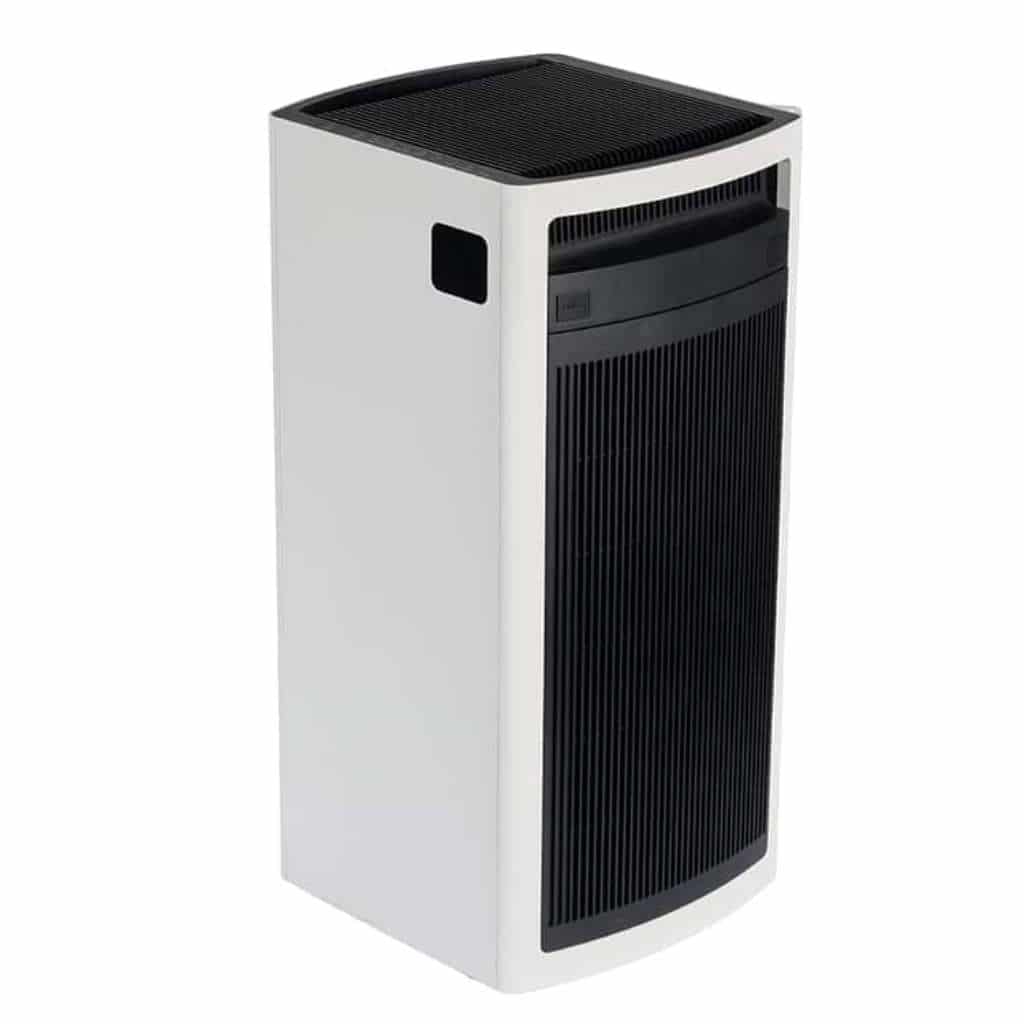
Image Source: HisoAir
Another air purifier that you should check out is the HisoAir Model HA-1601. This one is designed to work on spaces up to 1,000 square feet. Its reach is not as large as the Model HA-1968, but it is still undeniably extensive. It can still do multi-room air purification. It has a powerful airflow, as well, which is indicated by its high Clean Air Delivery Rate (800 m3/h). You can ensure that this air purifier can control the airborne pollutants efficiently.
This air purifier doesn't only deal with allergens. It is also capable of removing pathogens, such as viruses and bacteria. It has a capable HEPA filter that filters these microscopic threats, allowing you to breathe fresh, safe air. It also has a UV light that gradually kills these pathogens in the air.
| PROS | CONS |
|
|
3. HisoAir Model HA-138
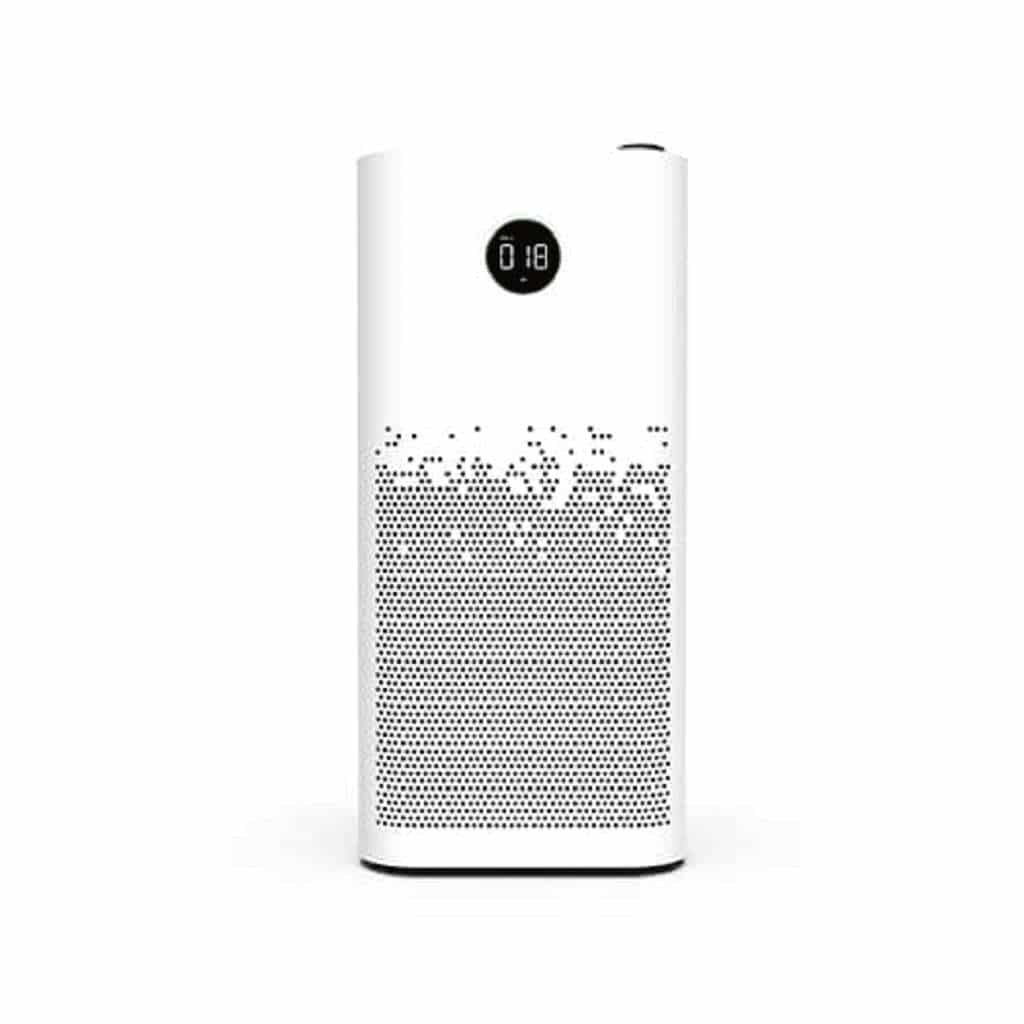
Image Source: HisoAir
The HisoAir Model HA-138 is a top-rated digital air purifier. With this air purifier, your space will be free from common contaminants, such as allergens, pathogens, and gaseous irritants and substances. It is even effective in removing odors from cigarette smoke and food, thanks to its activated carbon filter. It has a high Clean Air Delivery Rate (707 m3/h), which assures its optimal performance every single time.
This air purifier has user-friendly controls. Technically, it lets you configure its settings conveniently. This enables you to optimize the performance of the air purifier depending on your needs and requirements. Since it has air quality sensors, it lets you know the overall status of your indoor air quality.
| PROS | CONS |
|
|
How to Prevent Seasonal Allergies After Removal?
Seasonal allergies are seriously annoying. Once you have removed the allergens through your air purifiers, you need to make sure that you'll never be bothered by allergies again.
The following strategies can help on this matter.
- Wear a mask - Allergens are invisible. If you are outside your home, there's no way of knowing if they are present or not. To be on the safe side, you should wear an N95 respirator mask. It will block 95 percent of tiny particles in the air.
- Eat healthy - Fruits such as oranges and apples can help a person develop more resistance to allergies. Researchers are still finding the connection between the two. However, there's no doubt that a healthy body is more impervious to sicknesses.
- Clean your home - Keeping your home clean can minimize the chances of you contracting seasonal allergies. Cleaning can remove the indoor allergens that settle in the furniture, floor, and walls of your living spaces. Make sure that you use natural cleaners, as harsh chemicals can also irritate your nose.
- Don't smoke - Seasonal allergies can get worse if someone inside your home is smoking. The toxic residues of cigarettes can also aggravate symptoms such as irritated eyes and runny nose. Don't let a smoker prevent you from experiencing holistic relief from allergies!
Other Ways to Get Rid of Seasonal Allergies
Millions of people are affected by seasonal allergies. Once the spring blossoms, a lot would start sneezing, coughing, and roughing up with runny noses.
Fortunately, there are other effective ways of dealing with the symptoms of seasonal allergies. Here are some of them:
Over-the-Counter Remedies
You have several options for non-prescription medicines that can get rid of allergy symptoms. The following are the most plausible treatments:
- Antihistamines - Antihistamines are the most common treatment for allergy symptoms, such as watery eyes and runny noses. They are usually taken orally.
- Nasal sprays - Corticosteroid nasal sprays are medications that can relieve allergy symptoms. However, it would be best if you consulted your physician about the possible effects of the long-term exposure to these nasal sprays.
-
- Decongestants - There are oral decongestants that can relieve stuffiness in your nasal system. An example of these decongestants is pseudoephedrine. Some antihistamines have decongestants included in them. Talk to your attending physician if you are safe with these oral decongestants.
Alternative Remedies
One should know that there are natural remedies that are effective in treating allergy symptoms and hay fever. While their effectiveness varies depending on application and concentration, these alternative medications can provide allergy relief.
You have several options here, such as spirulina and shrub butterbur. The latter is quite promising. But the limited clinical evidence doesn't cement its overall safety and efficiency.
Close the Openings
We all agree that spring is nice. The breeze of the wind is pretty much tempting, right? However, that's where the pollen also thrives.
During this season, the pollen count in the air is pretty high. Hence, to prevent seasonal allergies, you might need to shut your windows and doors tightly. At the same time, you can also put a HEPA filter on your AC system.
It might also help if you have a panel filter installed on your face. In this way, allergens won't enter there.
Extensive Treatments
For many people, the sheer avoidance of exposure and the use of non-prescription medicines are already enough. However, if the seasonal allergy still persists, other more comprehensive treatments are available.
Go to your doctor so that they will be able to conduct a diagnosis for you. They might run blood and skin tests so that they will be able to identify what triggers your allergy. With these tests, you can take the appropriate measures to avoid allergens.
Allergy shots are already getting popular these days. This treatment involves injecting you with small amounts of substances that trigger your allergy. This would cause your immune system to be less reactive to those substances.
Conclusion
Seasonal allergies are really bothersome. They require prompt and effective treatment so that their symptoms won't become worse. If you are an allergy sufferer, you need to take extra measures to avoid allergens in the air.
Using air purifiers is among the most effective means of dealing with seasonal allergies. With these air purifiers, allergens won't be able to circulate freely in the air. When it comes to air purifiers, HisoAir is a brand that you should trust. Visit HisoAir and check all of its high-quality air cleaners!
Check our other informative blogs!



